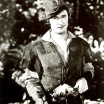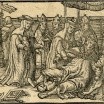Did They Really Exist?
A few historic figures stand halfway between fact and fiction: possibly authentic, possibly just a figment of public imagination. Here are seven such figures who are Maybe Real, Maybe Not.

Did the charming storybook outlaw ROBIN HOOD really exist? Some think he was based on a real-life figure with an entirely different name. Among candidates listed by the Worldwide Robin Hood Society are Robert Fitzooth, the Earl of Huntingdon (1160-1247), Robert de Kyme (c. 1210-1285, who also had a claim on the earldom of Huntingdon) and a fugitive named Robert Hod. The group also cites a 1998 book by British author Tony Molyneux-Smith, Robin Hood and the Lords of Wellow, which suggests that Robin Hood was not one man but a pseudonym taken by several descendants of Sir Robert Foliot. A man named Robin Hood does appear on the ancient court rolls of Wakefield, although the name alone has not been enough to convince scholars that he is the “real” Robin Hood. It’s also possible, of course, that the Robin Hood stories were made up out of whole cloth and that no true Robin Hood ever existed.

Nearly all the classic tales about KING ARTHUR are known to be works of fiction. Sir Lancelot, the Holy Grail, the sword Excalibur, Merlin the magician — these are the creations of poets and writers like Chretien de Troyes and Sir Thomas Malory. Still, some feel that the King Arthur of legend is based on a real-life king or strongman who lived in England during the 5th or 6th century A.D. (One leading candidate is Riothamus, sent by Emperor Leo I around 467 A.D. to rescue the British Isles from Saxon invaders.) Similarly, 20th-century excavations at Castle Cadbury in Somerset, England have led enthusiasts to suggest that it was the site of, or inspiration for, Arthur’s Camelot. Nearby is Glastonbury Abbey, which legend holds was the burial site of Arthur and Queen Guinevere.

A woman pope? Sure! That’s what some faithful believers say about the existence of POPE JOAN, who was supposed to have held the papacy in the 9th century, right between Pope Leo IV and Pope Benedict III. The story is that Joan was born in Germany to English parents and was educated in the sciences. She masqueraded as a man, John (or Johannes) Anglicus, and was eventually elected pope in 853. After a little more than two years as Pope John VIII (wink, wink), Joan’s womanhood became embarrassingly obvious when she gave birth to a son while riding in a procession through Rome. The startled crowd tied her feet to the tail of her horse, then stoned her to death as she was dragged through the streets. That’s one version of the story, anyway, as popularized by Martin of Troppau, a Polish monk living in the late 13th century. Until the 16th century or so, it was accepted lore that there had been a female pope. When Protestant propagandists after the Reformation used the story to criticize the Catholic Church, the Vatican began to officially call the Pope Joan story a fabrication. Indeed, there is no contemporary evidence that there was ever a woman pope, and the records show that there was only a few weeks between the time Leo IV died and Benedict III became the new pope. Those who believe Pope Joan existed argue that the Catholic Church went to elaborate lengths to cover up all evidence of a woman pope. Maybe so, but if that’s the case then it’s likely we will never know for sure.
The traditional story of HOMER, the poet credited with composing the Iliad and the Odyssey, is quite specific on several points. He was supposed to have been blind, to have been born at Smyrna (on the coast of modern-day Turkey) and to have wandered the region reciting his famous histories (which later were written down by others). The great historianHerodotus seemed to think that Homer was a real man who existed centuries before his own time. But the German scholar F.A. Wolf suggested in his 1795 book Prolegomena ad Homerum that Homer was simply a name given to dozens of Greek bards who contributed to the histories over time. Wolf’s book sparked a discussion which has continued to the present day, and even experts seem to agree that there is no way to prove whether Homer was one man or just a collective of forgotten poets.
AESOP is another maybe-not-so-real bard of antiquity. Aesop’s specialty were short, pithy fables — just the opposite of Homer’s long histories. According to tradition, Aesop was a slave on the island of Samos who won his freedom through his wits. He is also supposed to have been a resident at the court of King Croesus. But the quickie nature of Aesop’s fables make it easy to imagine new stories being tacked on by many people over time, like jokes added to a modern-day email. Most scholars seem to think that a single Aesop never existed, and even the Encyclopedia Britannica calls him “almost certainly a legendary figure.”

BIGFOOT, too, is almost certainly a legendary figure, but hope springs eternal among fans of the shaggy vagabond. No scientific proof has ever been offered for Bigfoot’s existence, but many hunters and hikers have claimed sightings of an ape-like creature — the one they also call Sasquatch — in the forests of North America. The most famous “evidence” of Bigfoot is the 1967 film footage shot by Roger Patterson, which shows a hairy giant lumbering through evergreen trees in Northern California. The film was never proven to be genuine, but it also has not been proven a hoax. Patterson died in 1972, still insisting that he had captured a real Bigfoot on film.
Another large and mysterious creature that has eluded humans is the LOCH NESS MONSTER of Scotland. “Nessie,” as she (she?) is affectionately called, has been stalked by photographers, tourists and scientists since the 1930s. Loch Ness is the third-largest body of fresh water in Europe, long and narrow and deep and murky, making the hunt for Nessie a tough row to hoe. Nonetheless, the area attracts tourists and researchers, but after thousands of sightings and several controversial photos, no conclusion has been reached as to the existence or nature of the “monster,” often described as a diamond-shaped swimmer with a long neck and flippers. Incidentally, nearby Loch Lochy boasts a similar creature, described by some as a “three-humped first cousin” to Nessie (but with “a great personality”).
The PIED PIPER OF HAMELIN is a fairy tale flautist, but he may also have been a real person. Hamelin (or Hameln) is a real town in Germany and something mysterious did happen there in the year 1284. For centuries a stained glass window in the village church depicted an old man with a crowd of children, apparently with an inscription saying that on 26 June 1284, “By a piper, dressed in all kinds of colors, 130 children born in Hamelin were seduced and lost at the calvarie near the koppen.” The window was lost in the 1600s, though copies of the inscription remain. Some believe the description is actually a veiled reference to a plague or other natural disaster, or to an exodus of settlers to another territory. The true details of the incident, and of the piper, remain unknown.
